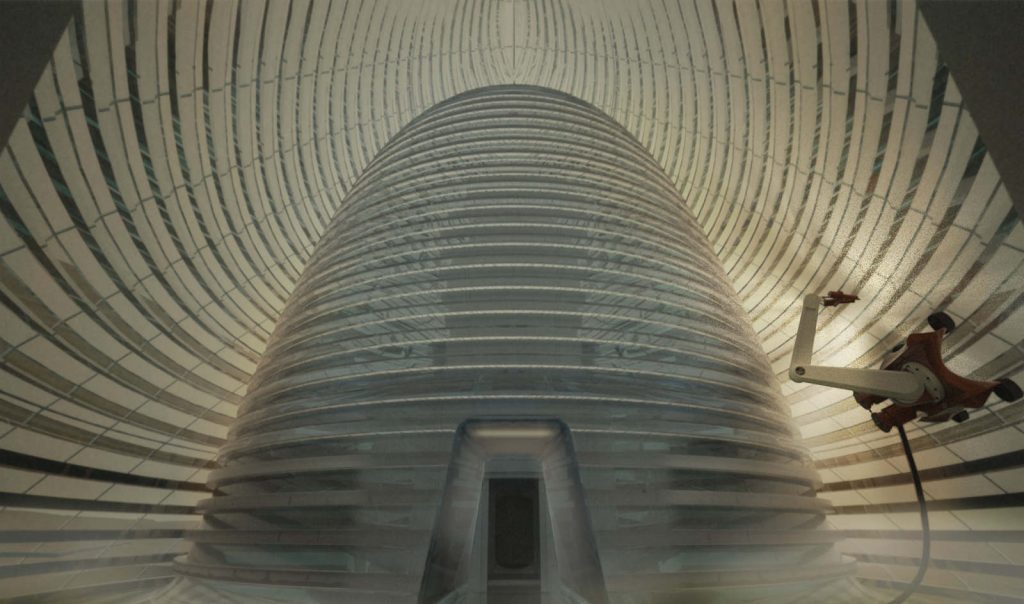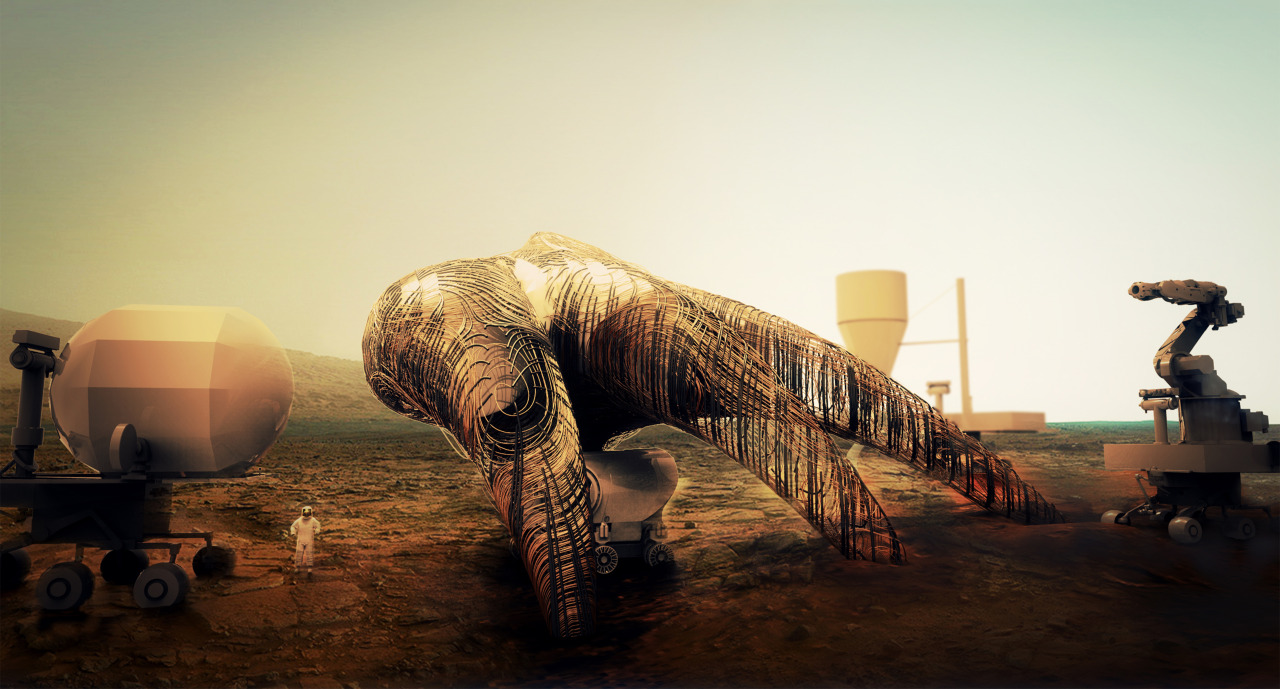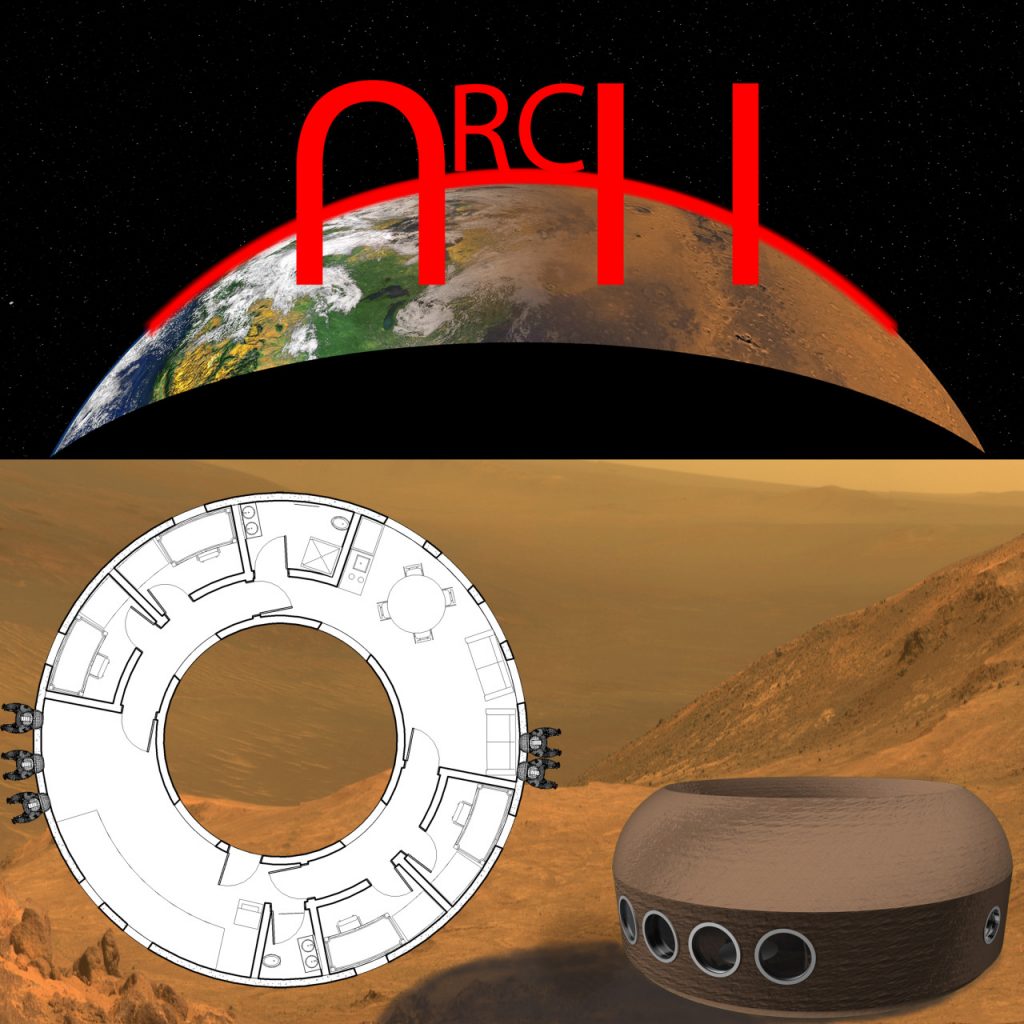Phase 2 of NASA’s $1.1 million Centennial Competition is now open for applications from individuals, universities, and corporate teams based in the US. The challenge, should you choose to accept it is:
“to develop the fundamental technologies necessary to manufacture an off-world habitat using mission recycled materials and/or local indigenous materials.”
Or, to put it simply: to make a building for Mars (out of recycled materials).

In addition to the cash prize, winners will qualify for Phase 3 of the competition where teams will collaborate to fully fabricate the designs at Caterpillar’s Edwards Demonstration Center.
Phase 1 of the competition was completed in September of 2015 and focused on the architectural capabilities of 3D printing. The entry “ICE HOUSE” from team SEArch/Clouds Architecture Office was awarded first prize and took the below freezing temperatures of Mars as inspiration.
In reaching out to independents, the Centennial Competition (a partnership between NASA, Caterpillar, Bechtel, Brick & Mortar Ventures and Bradley University) is seeking true innovation. Inhabiting Mars is still a distant prospect yet the project has relevance on Earth. Justin Speichinger, advanced engineering manager for the Caterpillar Excavation Division, explains:
“By expanding our horizons and engaging in progressive opportunities like the Centennial Challenge, we are better equipped to develop disruptive technologies to solve our customers’ current challenges as well as prepare for our mutual long-term success.”
This is the latest installment in a series of moves NASA has made to make aerospace manufacturing more sustainable, and follows a contract with Tethers Unlimited. A company developing a filament made from waste plastic. As 3DPI’s Andrew Wheeler reported on the launch of the competition:
“If eternal glory is a bigger motivator for you than money, you will be happy to know that the winning products and concepts will help NASA forge a path towards future space habitation as well as aiding in the ongoing exploration of 3D printing sustainable housing here on earth.”
Entries can be made via the Bradley University website, where the terms of entry and general FAQs can also be found. For an idea of what could be created it’s also worth checking the pictures below for further entries from Phase 1.






